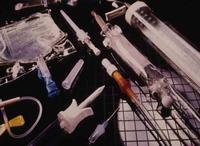Individuals and industries are aware of the need to act responsibly in protecting the world by applying the principles of sustainable development. This means acting in a way which does not limit the range of economic, social and environmental options available for future generations.
We have to use natural resources as effectively as possible in the production of consumer goods. PVC makes the most of valuable resources by using the minimum amount of raw materials and energy during manufacture and processing. 
Today, PVC is lighter, stronger and more adaptable than ever before thanks to continuing technological innovation. This means that product for product, proportionally less of the world's oil and energy resources are being used with lower overall impact on the environment.
The European PVC industry is also endeavouring to pursue an integrated approach towards product stewardship that contributes to minimising any potential negative environmental impacts associated with each stage of the PVC lifecycle.
The industry has undertaken major initiatives in setting tough standards for production and developing improved solutions for the end of life management of its products.
The environmental advantages of PVC use in medical devices are:
- Comparatively low energy and resource use in production and conversion;
- PVC products are durable;
- At end of life PVC products may be reprocessable, or can be incinerated, allowing energy recovery; or safely disposed of in landfill.
In a report published by the European Commission in 2004 - “Life cycle assessment of PVC and principal competing materials” - it is mentioned that no comparative studies have been undertaken so far to compare PVC with possible competing materials within the medical sector.
According to the report this is considered to be a significant information gap. In 2008 the first steps have been taken to fill out this gap. In fact in an article from January 2008 written by the Swedish Life Cycle Assessment (LCA) expert, Håkan Stripple, from The Swedish Environmental Research Institute tries to compare catheters manufactured in PVC, TPU (thermoplastic polyurethane) and in a newly developed polyolefin-based elastomer respectively.
The evaluation of the LCA results showed that the newly developed polyolefin-based elastomer catheter in general has a low environmental impact
From a PVC point of view the article which is titled ”Development and environmental improvements of plastics for hydrophilic catheters in medical care: an environmental evaluation”, draws some interesting conclusions.
The evaluation of the LCA results showed that the newly developed polyolefin-based elastomer catheter in general has a low environmental impact.
And extremely important in this respect, in relation to PVC, the article says that “The impact is significant lower than the TPU catheter material and in the same level as the existing PVC bulk plastic material”.
And later on in the article it is reported that “Compared to the PVC plastic material the new polyolefin-based elastomer showed an almost equivalent environmental performance”.
For the first time we now have an LCA analysis which compares examples of PVC medical devices with alternatives and which shows that PVC actually is among the most favourable when it comes to environmental impact.









